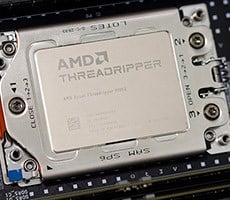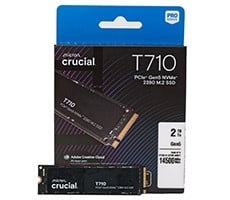AMD Ryzen Threadripper 9980X & 9970X Review: Bountiful Cores, Big Performance
The 3DMark CPU Profile test is multi-threaded and reports results for six different thread levels, including single-thread and maximum threads...
UL 3DMark CPU Profile Benchmark
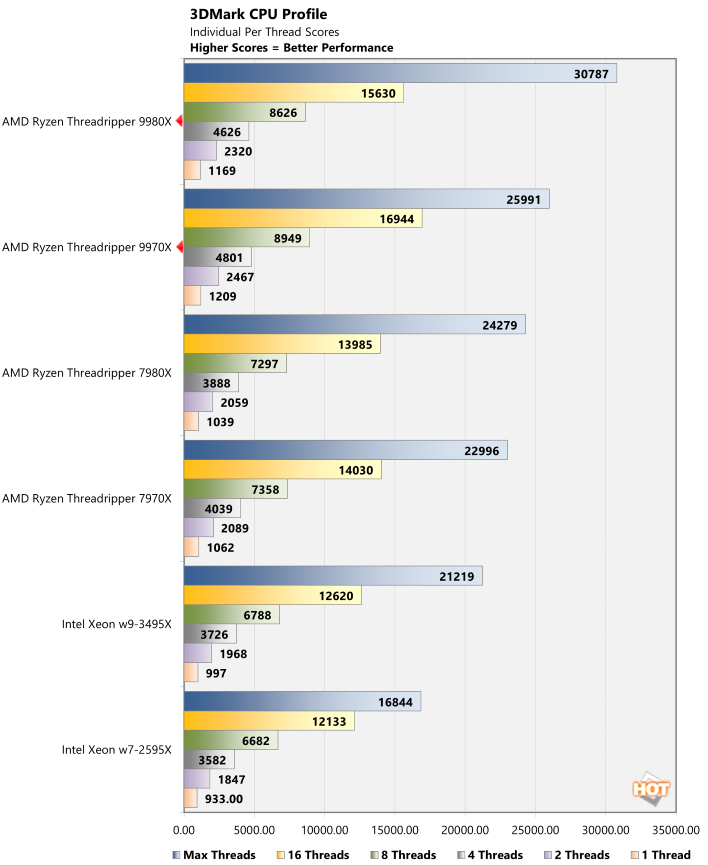
The new Threadripper 9980X and 9970X take the top two spots yet again, outpacing all of the other many-core processors we tested.
High And Low Resolution Gaming & Graphics Benchmarks
We also ran some mid and high-resolution game and graphics benchmarks on our test rigs with 3DMark, F1 2024, Final Fantasy XIV: Dawntrail and The Talos Principle 2. We used 3DMark's default Steel Nomad preset, and the games were run in two different configurations — either 1080p with Medium/High details, or 4K with High/Extreme details. The lower resolution tests are designed to be more CPU bound to better isolate processor performance, while the higher resolution tests are more GPU bound, where the CPU should have less of an impact.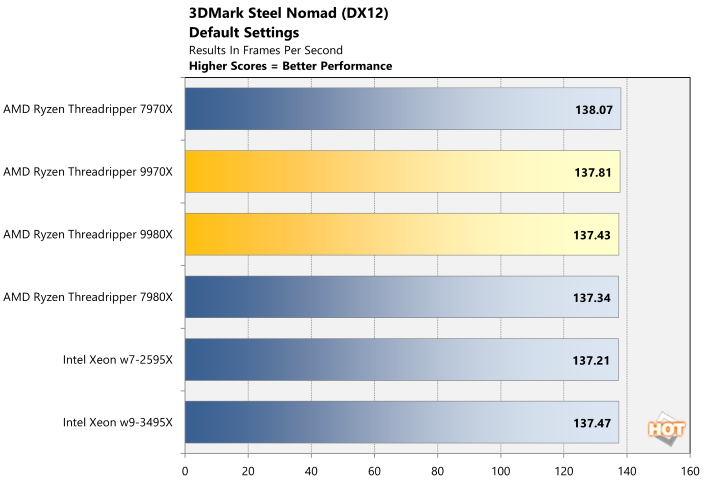
Even with a GeForce RTX 5090 in our test bed, 3DMark's Steel Nomad test is GPU bound and all of the systems are essentially tied. Not much to report here, except to say that Windows 11, chipset drivers, and graphics drivers have improved significantly in recent years and behave much better on these many core processors.
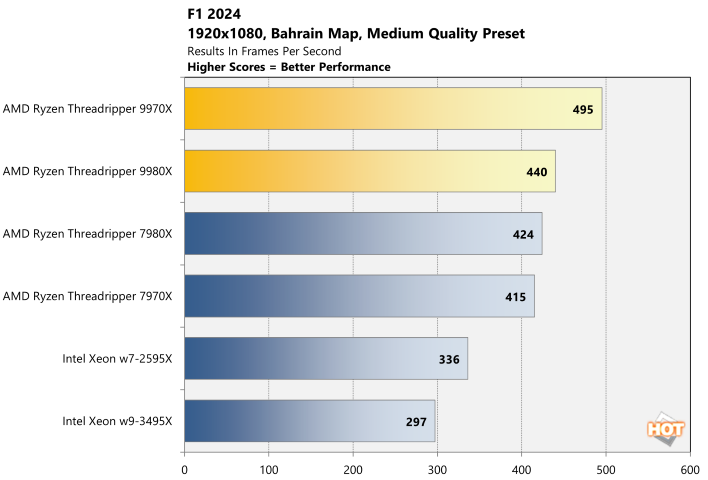
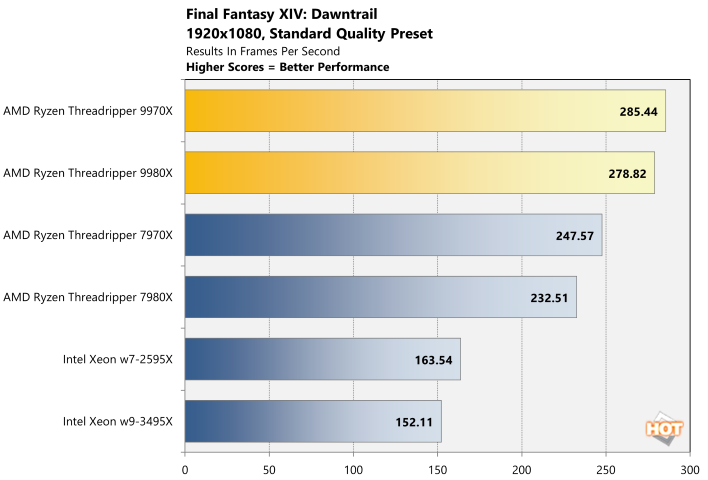
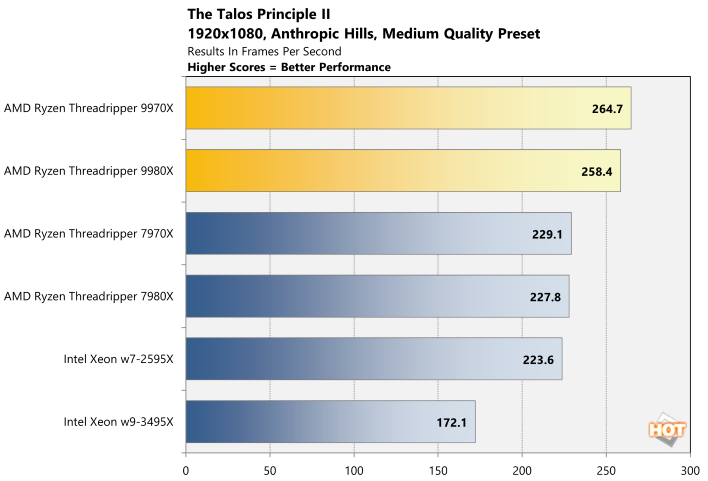
A clear picture emerges in our 1080p game tests. Although these processors aren't targeted at gamers, the Threadripper 9980X and 9970X are the fastest overall, sometimes by a wide margin. If you want to squeeze in some gaming after work, these processors are more than capable and very high framerates are possible.
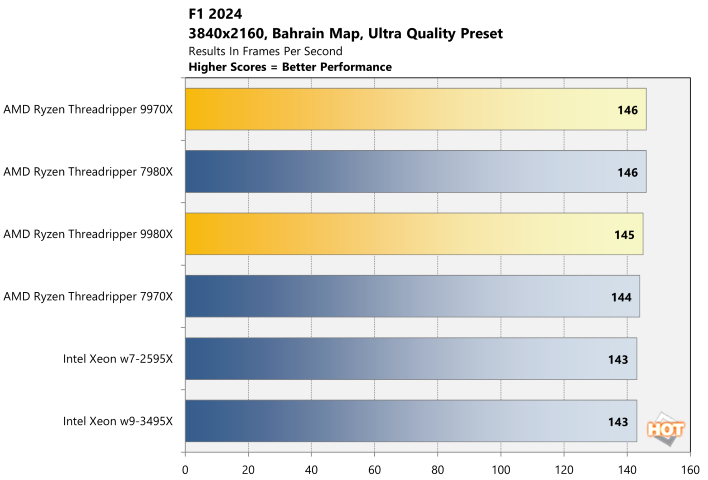
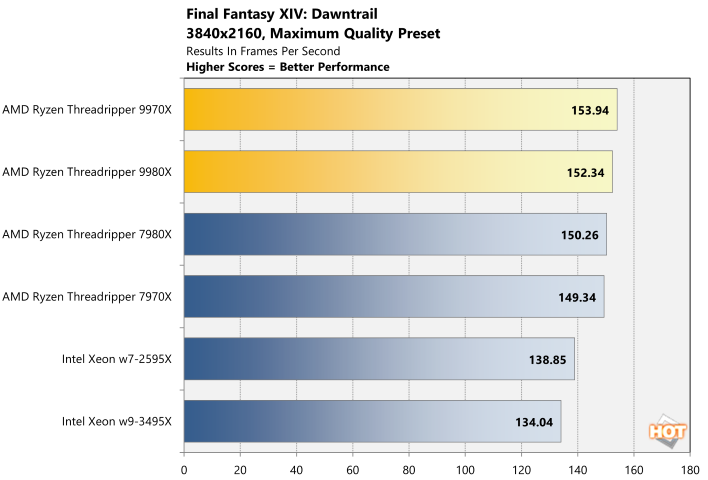
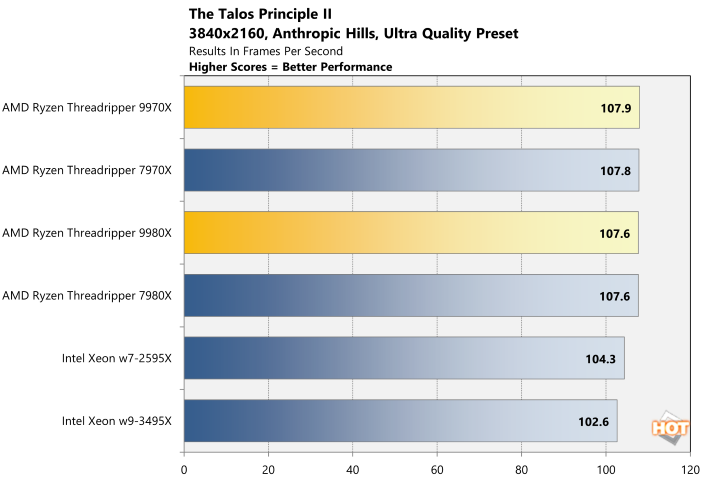
That said, upping the resolution and image quality to shift the performance bottleneck onto the GPU erases some of the Threadripper 9000 series' advantages, but they finish at or near the top of the charts regardless.
AMD Ryzen Threadripper 9000 Series Power Consumption
Throughout all of our benchmarking and testing, we also monitored how much power our test rigs were consuming with a power meter. Our goal here is to give you an idea as to how much power each configuration used while idling at the Windows desktop and while under taxing CPU workloads across one or all cores. Keep in mind, this is total system power consumption being measured at the outlet and not the the individual power being drawn by the CPUs alone.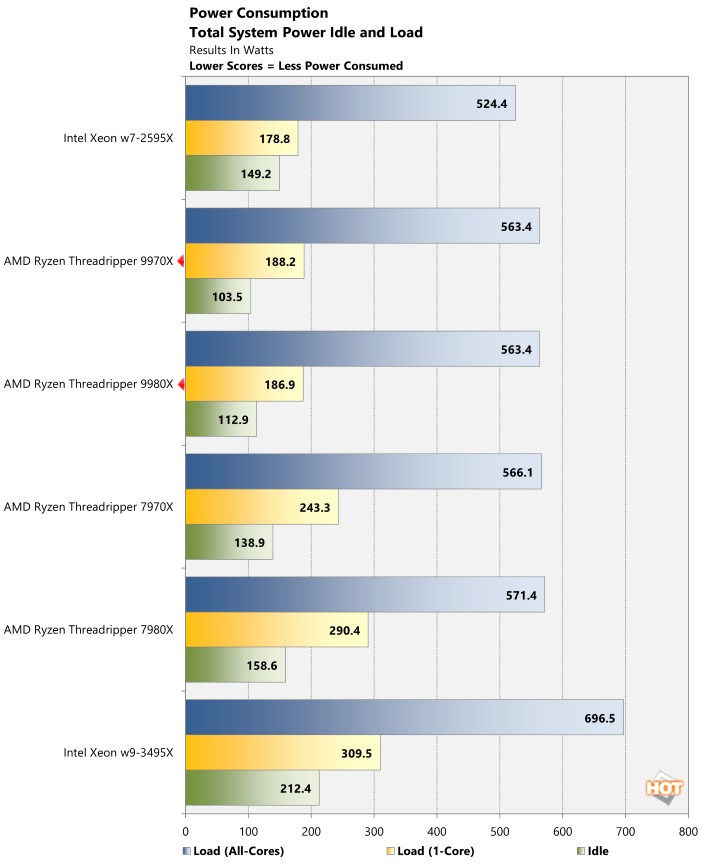
All of AMD's Threadripper processors are essentially designed to take advantage of all of available power in the socket. As such, there's not much different in peak power consumption when the chips are fully loaded. The new Threadrippers, however, clearly consume less power than the Xeon w9-3495X and the Threadripper 9000s consume less power than the previous generation at idle or with lightly threaded workloads. Considering their significantly increased performance, and better power consumption characteristics, the Threadripper 9000s are clearly the most efficient many-core chips of the bunch.
How power, frequencies, and thermals are affected in a variety of workloads with the AMD Ryzen Threadripper 9980X is presented in the charts above. What you see here are frequencies, temps, and utilization over the course of a couple 3DMark CPU Profile and PCMark 10 Applications benchmark runs. The CPU clock during the 3DMark CPU Profile run shows relatively small variations, and remains in the 5GHz range throughout. With the varied PCMark workloads, the AMD Ryzen Threadripper 9980X's frequencies bounce between its base 3.2GHz and boost 5.4GHz range whenever the CPU is under load. The CPU temperature also remains relatively low throughout, and hovers mostly in the mid-50°C / high-60°C range save for some small blips around 80°C.
We should note that we're using a 360mm Silverstone TR5 cooler on the test rig that has no trouble handling these latest Threadripper, but ambient temps in the lab were somewhat high during these hot summer days. Let's wrap things up, next...



